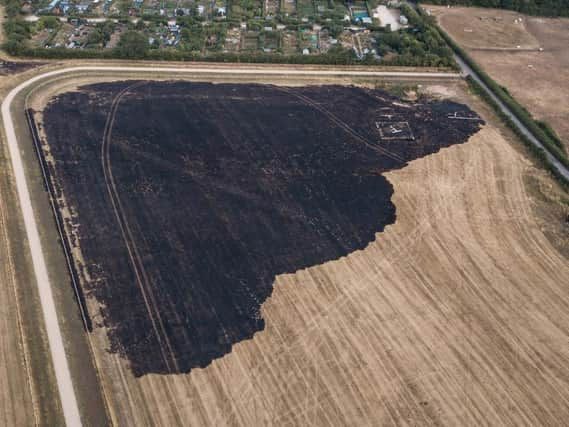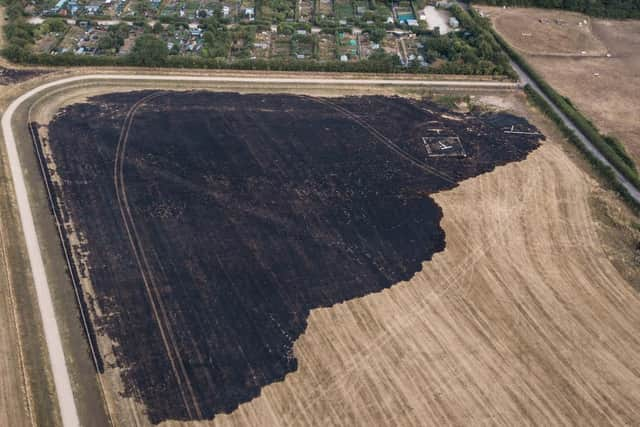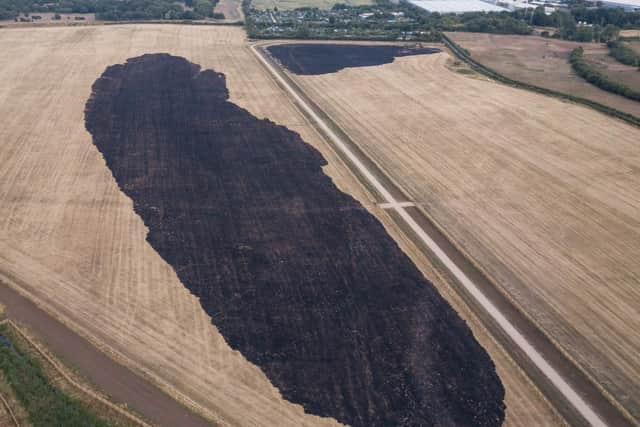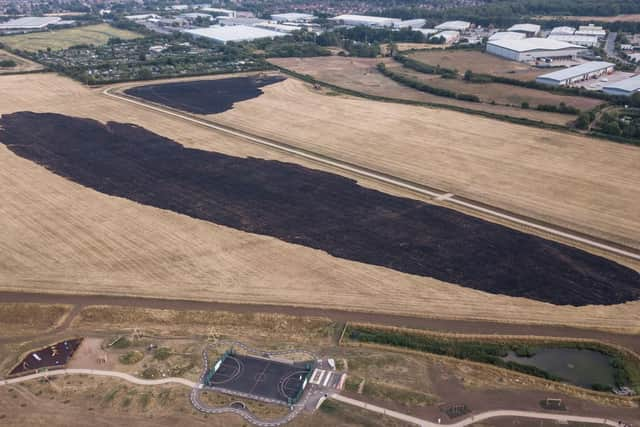Aerial photos show scale of damage caused by fire in Hucknall - as heatwave turns landscape brown


And an ugly hundred metre square foot black patch of land shows an area where a fire, believed to have been started deliberately, tore through crops in Hucknall.
Other startling images show a combine harvester churning through the parched crops in Lincolnshire.
Advertisement
Hide AdAdvertisement
Hide AdAnd the drone camera photos show an area of fire damage in Hucknall, Notts., on an old Rolls-Royce airfield – which is being treated as a possible arson attack.


Other photos show farmland on the outskirts of Lincoln – sweltering in the heat.
NFU Deputy President Guy Smith said: “Farmers are used to dealing with the challenges extreme weather can pose but this unprecedented spell of 40 days of sunshine and sustained high temperatures has been unusual.
“The lack of rain across many parts of the country has meant grass becoming scorched and turning brown.
Advertisement
Hide AdAdvertisement
Hide Ad“That’s bad news for livestock and dairy farmers who’re now starting to dip in to their fodder supplies that they keep for the winter months which adds additional costs to the business."


Britain has been enjoying its longest heatwave since the summer of 1976 as temperatures regularly sail above 30C (86F).
The country had received just 47mm of rain by the midpoint of the meteorological summer on July 16 since the start of June.
This makes it the driest start to summer on modern records, which date back to 1961.
Advertisement
Hide AdAdvertisement
Hide AdIf the rest of the summer continues as average, it will be one of the top five summers on record.


This is closely followed by 2013 with 59 mm of rain. But spells of thunderstorms and very wet days in late July meant 2013 became only the 14th driest on records dating back to 1910.
The Met Office has issued a level 3 amber heatwave alert, warning people to “stay out of the sun” with temperatures predicted to hit 30C in some parts of the country later this week.